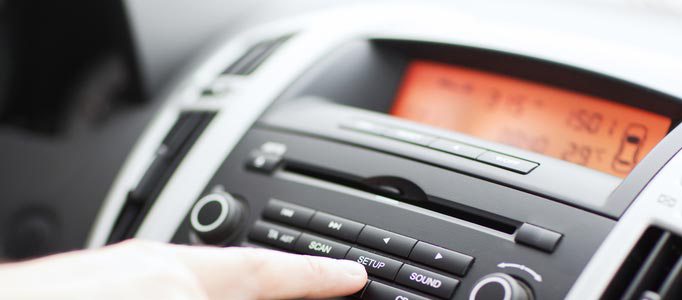The CD (Compact Disc) has shown to be an extremely resilient format. Announced by electronics giants Sony and Philips in 1982, the CD was the future. It was to take on the tape cassette in a digital revolution, and by the mid 90’s it won. Of course, you can’t have a successful music platform without being able to play it in cars, and motoring manufacturers were quick to adopt CD players and even offer multi-CD changers so you had the convenience of loading all your favourite brit-pop albums and change them without having to handle the CD. How convenient.
Now we’re in 2014, and things have changed. The CD is quickly becoming a platform of the past, and new technologies are making a foothold in our homes, our cars and our ears.
Streaming services, and the end of ownership
You no longer have to buy music to listen to it legally. Streaming music services such as Spotify, Pandora and Rdio have access to huge libraries of music for your listening pleasure. Even Apple have their own streaming service – iTunes Match – which can stream music from your collection down to your phone through a 3G data connection. The streaming revolution is here, and what that means is no annoying storage of any kind – be that your phone’s flash memory, scratchable contact discs or “Oh damn it I lost it again” flash drives.
Here are just a few technologies that have taken pride of place in our dashboards, and are forcing the compact disc out of our cars.
Bluetooth
When I was a kid, Bluetooth was mainly used for swapping photos, ringtones and MP3 files with your friends. It took ages, and was usually a pain to pair your phone with theirs (No, now YOU put in the passcode. Not that one, the one I just put into mine. Ugh).
When the iPhone came along, the days of transferring files through a Bluetooth connection came to an end. The phone was so locked-down it was impossible to do such things. What the Bluetooth chip COULD be used for, though, was audio. The A2DP functionality in most modern smartphones allows music to be played wirelessly from a device to something like wireless headphones or – of course – a car head unit. What’s more, the connection works both ways, so the music can be controlled by the car, meaning the phone never needs to be picked up once it’s been connected.
AUX
This is actually a pretty old technology. AUX or Auxiliary inputs have been around for years, but they are often the easiest – and cheapest – ways to get your 90’s acid trance music pumping through your 6x9’s.
Essentially a cable with a headphone jack at either end, the auxiliary input can support pretty much any audio device with a headphone output. What that means is you can use any MP3 player or modern smartphone to get the music through your car stereo. Most cars now come with some kind of auxiliary input, and if yours doesn’t it’s easy to find an aftermarket head unit you can install. They usually have awesome lights on them too so you feel like your Corsa is even more badass!
Proprietary inputs
Very occasionally, car manufacturers support specific devices through proprietary connections, such as Audi’s MMI (Multi Media Interface). This connection will charge and play your device through the car, and will usually let you control the phone too! The main disadvantage of this approach is that technology moves quickly, and connection standards change.
More and more, cars are coming equipped with one, two or even all three of these technologies as factory standard, and the compact disc is fading away into the annals of history. How do you play your music in your car? Are you tired of carrying CDs with you everywhere you go? Are you still a tape casette fan? Has Spotify changed your life? (If so, listen to our driving tunes playlist here)
Let us know your thoughts below!





 Facebook
Facebook Twitter
Twitter Instagram
Instagram LinkedIn
LinkedIn Youtube
Youtube